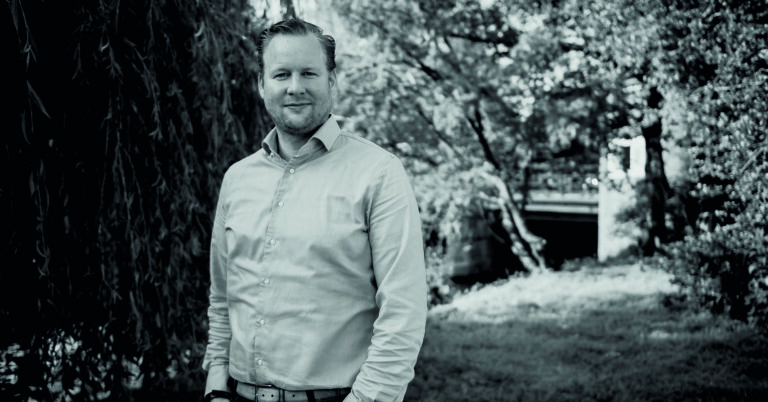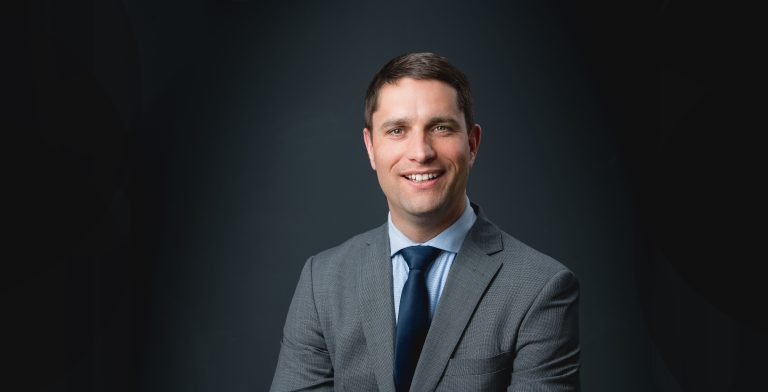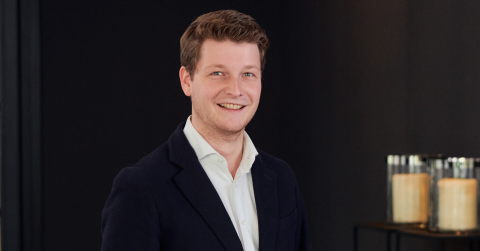
How can you use data to optimally help your customers? Frank van Wessel gives us five insights

Know Your Customer, says Frank van Wessel, lies at the heart of all services and translates to the ability to identify your customers. As Services Director at Aegon, he is responsible, among other things, for customer-data management. For an insurer like Aegon – which has a plethora of products and entities – reconciling relationship data involves a lot more than meets the eye. For example, how can you bring that data together in a way that uniquely identifies the customer and makes it possible for you to be both relevant and proactive? Frank’s insights provide some answers.
“At Aegon, I am responsible for the relationship domain, also known as Party- or Customer-Data Management. We have many different types of relationships. These include, for example, private customers, pension-scheme subscribers, employers, director or major shareholders, advisers and suppliers. Furthermore, a single relationship can have several facets. Take the owner of a consultancy, for example. He could be the director or major shareholder, and thus the Ultimate Beneficial Owner of the consultancy. As an employer he might offer a pension scheme to the consultancy’s employees, or he could himself be the policyholder and premium payer of a car-insurance policy. We can harvest a great deal of relationship data from sources such as a website visit, a “My Environment” account, and customer satisfaction, product ownership and customer lifetime value. The trick is to combine it all intelligently and make the necessary connections.”
“In collaboration with ITDS, we are tackling the situation at Aegon and working hard to improve our data domain and the associated data quality. We started off by inventorying the necessary capabilities, after which we factored in our own requirements and how long we want to take. This resulted in a roadmap, which we are currently working hard to realise. The journey along this roadmap is one we are making with ITDS, with the overriding objective of making our customer experience as optimum as possible. But how can all this be achieved intelligently?”
1. Don’t see data as the objective, but as the means to an end, which is serving your customers better.
“For me, data is not the objective; it is the means through which we can give our customers better service. We are not yet in a position from which we can always offer the kind of service that our customers expect and deserve. They are, after all, accustomed to the speed and convenience offered by digital service providers like Bol.com and Coolblue. Players like these have raised the bar, made it necessary to offer a good customer experience and to be relevant, personalised and proactive. It’s hard work reaching that kind of level.”
2. Wish for your customer what you want for yourself.
“I feel like an extension of our customers and I want to help them as I’d want to be helped myself. For the sake of argument, let’s assume you’ve received a letter from Aegon. But you have a question about this letter, which you subsequently asked via Twitter. However, the answer is not really clear so you eventually have to call. To help you quickly and properly, we need good insights, into both you as a customer and the interactions that have already taken place so far. In a nutshell, we need to immediately see that we’ve sent you a letter, that you have tweeted about it and that you are now calling. At this point we need to make the necessary connections between these snippets of information. Technically speaking, this is not a problem. But we cannot – and neither should we want to – simply link all that data. Privacy, security and ethical issues are all hot topics at the moment. Given that you mainly want a quick answer to your question, it’s up to us to respond quickly, efficiently and in such a way that one contact moment is enough. Or perhaps, even better still, avoid the need for you to ask that question in the first place!”
3. See your customer as a unique gateway for personal service.
“This year Aegon is celebrating its 175th year, which means we have been collecting information about our customers for 175 years. For most of that time it’s been on paper, stored in filing cabinets, but now it’s saved in a variety of systems. You might now be thinking that all we have to do is link all these systems. Well, think again. That would be a huge undertaking and an unnecessary one. We are currently working on something called the Aegon Service Number with which you, as the customer, can arrange as much as possible yourself. The number is your unique key. With it, we would immediately be able to see in the previous example that you’ve received that letter and asked that question. Naturally, we need to be sure that it really is you, and not someone else improperly accessing your data. So we have to do it all intelligently and properly. Striking the right balance, that’s what it’s all about. By linking data sources through an Aegon Service Number, we can link exactly the right services to the exactly the right customer. It also makes it possible to link additional data in future. That said, I think it’s important that we curb our enthusiasm in what we save and only save data that will benefit the customer. It’s all about balance and dialogue.”
4. Ever-accelerating developments.
“It goes without saying that at the outset we considered carefully when we wanted to arrive at the place we wanted to be, as well as how we wanted to get there. These considerations were translated into a roadmap that will take between one and two years to traverse. On reaching the final destination on this roadmap, we will have realised the objectives specified at the start of the journey. But in the meantime technology will, of course, not have stood still. Look how quickly privacy, legislation and regulations, data and customer experience are developing. On that journey along the roadmap you must, as an organisation, be able to respond to developments as and when they occur. But when it comes to technological advances, it’s simply not possible to look very far into the future. The destination, therefore, is never really reached, and this fact also makes it a great domain to work in.”
5. Get your colleagues on-board.
“I see this project as a great opportunity and challenge to help take Aegon to the next level. It also involves inspiring and getting colleagues on-board so that the importance of customer orientation can be anchored even deeper in the organisation. It always takes a while to start something up. And, having got that far, you must capitalise on its momentum. We’ve now reached the stage that it’s almost up-and-running. Something is going on here that people – ranging from young colleagues to employees who have worked here for many years – are finding distinctly appealing. It’s also reflected in customer satisfaction. The more obstacles we take away, the better we can help our customers.”
About Frank van Wessel
Frank van Wessel is Director of Services at Aegon Nederland (the Netherlands). Previously, he was Agile Transformation Lead at Delta Lloyd and Marketing Manager at BeFrank. He studied Economics at Tilburg University in the Netherlands.





